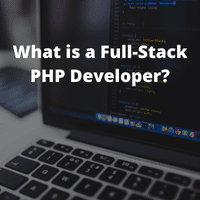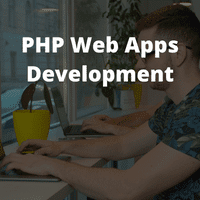Hi, I’m Keith Smith. I am a freelance PHP programmer.
Below are the highlights of my long tenure as a developer.
If you have a project you would like to talk to me about, please call me at 480-748-9893 or complete my Project Request Form.
I look forward to hearing from you soon.
Professional Summary
- Was exposed to programming in 1983 at the University of Arizona.
- xBase developer from 1986 through 1999.
- Did my first freelance computer programming in 1988.
- Created my first website by hand in 2000.
- In 2006 I became a freelance PHP developer.
- I’m a seasoned PHP/MySQL full-stack developer.
- Working knowledge of Linux for web servers and as a desktop O/S.
- Completed an Associate’s degree in programming.
- Completed a Bachelor’s degree in Management Information Systems (MIS) and Operations Management (OM).
- I focus on custom web application development as a full-stack PHP programmer.
My Linux Skills and History

I found out about Linux around 1998. I immediately bought a box set of RedHat Linux 4.2 and began learning Linux.
I have used Linux as a desktop several times. Once in 2000 for 8 months and again around 2003 or so. The first time I was not ready for Linux and Linux was early in it development. The second time I used Linux for my workstation operating system was for 3 or 4 years. I went back to MS Windows because I need to be able to work with a team of developers and needed to screen share.
There is currently no reason I cannot return to Linux as my desktop O/S so I plan to do so in the future before Windows 10 hits the end of its life cycle on October 14, 2025.
As a freelance PHP programmer, I have configured a lot of testing and development LAMP servers using Linux. LAMP stands for Linux, Apache, MySQL, and PHP.
Recently I configures a home server on an old laptop that had been updated with a Sold State Device (SSD) drive to improve its performance. This home web server was a comprehensive PHP web server to include DNS and email. It ran Ubuntu 20.04LTS, the Apache web server, the data engine MySQL, the PHP programming language, BIND9 to manage Domain Name System (DNS), PostFix and Dovecot for email. I did all this out of my home office on my business Internet connection.
My PHP/MySQL Freelance Programming Experience

In 2000 I created my first website by hand using the PERL programming language. At that time I think I might have been using an early version of MySQL.
I worked in tech support for GoDaddy and iPower for several years before I decided to become a freelance PHP developer.
PHP/MySQL hit my radar around 2002. Back in those days most of the hosting providers were offering the web programming languages Java, PERL, and PHP.
Around 2004, while at GoDaddy, I started looking at PHP and started doing some programming with it.
In 2006 I was ready to go out on my own so I built a website, performed the SEO, and started doing business.
Between 2007 and 2019 I supported a very successful online shopping cart. For the most part, I was their only IT asset which caused me to be exposed to the full gambit of technology necessary to sell online. I dealt with web hosting, DNS, secured certificates, mailing list issues such as sender policy framework (SPF), configuring test and development servers, billing gateway programming, and much more.
This shopping cart was very custom and I brought the cart into Payment Card Industry (PCI) compliance and completed the annual certification.
During all of this, I created a website backup system using Amazon Simple Storage Service (S3).
This project ran for 11.5 years so it would be difficult to list all the things I did.
Education

- Completed an Associate’s degree in programming at Pima Community College in Tucson, AZ. This was a very in-depth programming curriculum that included machine language programming, programming using the Pascal programming language, programming in COBOL, which was popular at the time, computer application analysis and design, database principles, and much more.
- Completed a Bachelor’s degree in Management Information Systems (MIS) and Operations Management (OM) at the University of Arizona. This dual major curriculum consisted of economics, accounting, math, computer programming, systems administration as a manager, taking facility plus labor plus raw materials to create a business process to produce finished goods. It also includes measuring and optimizing processes to make them better.
What is a PHP Programmer

A PHP programmer is a professional who programs in PHP. PHP is Open Source and a server-side programming language that is native to Linux. It was created by Rasmus Lerdorf in 1995 to automate the publishing of his website. Today the PHP programming language is supported by a community.
Somewhere around 80% of the Internet websites/web applications use PHP in some fashion.
What Does a PHP Programmer Do

A PHP programmer writes, maintains, and modifies PHP program code. This code falls into several buckets. 1) Website coding. 2) Creating web applications like your online banking system, or that run a business or part of a business. 3) PHP programming code that is used for server automation or other types of automation.
As you may already know a PHP programmer is a server-side programmer. PHP runs on the web server. Therefore a PHP programmer is a server-side developer.
What is a Full-Stack PHP Developer?

To be a full-stack PHP developer means one has the skills to program on the server, as well as being able to program on the front end – that would be the browser and usually is the JavaScript programming language. PHP runs on the server and JavaScript runs in the browser. Also one must be able to troubleshoot the entire stack.
The entire stack consists of:
HTML
HTML is what gives a website or a web page its structure. HTML is not a programming language, it is a markup language. HTML stands for HyperText Markup Language.
Cascading Styling Sheets (CSS)
CSS is what gives an HTML website or web page its style. CSS is how designers and developers set font size, color, and much more.
JavaScript
JavaScript is a client (browser) side programming language. It runs in the browser. Every modern web browser runs JavaScript. Because each browser has its own JavaScript interpreter, JavaScript is “quirky”. To solve this problem JavaScript libraries are put into use. I prefer jQuery.
AJAX
Using the JavaScript programming language, AJAX is used to make web pages interactive. AJAX scripts can be used to update web pages as needed. AJAX is a very powerful technology that can make a web page as interactive as a desktop application.
Linux
Linux has been around since the ’90s, which makes it very mature. Linux in this scope is used for hosting web servers. PHP is native to Linux. As a full-stack developer, I am well versed in the use of Linux for web hosting.
Apache/NGINX
Apache and NGINX are software servers that run on the Linux hosting box. These are HTTP servers. They pull the data from the server and send it to the browser making it possible to view web content. HTTP stands for Hypertext Transfer Protocol.
MySQL
MySQL is the most popular data engine on the web. MySQL is very mature and is my preferred data engine. Other data engines are available, however, my go-to data engine is MySQL.
PHP
PHP is a server-side programming language. PHP is native to Linux and I would not recommend using any other operating system as a PHP web server. PHP was created in 1995 by Rasmus Lerdorf to automate the publishing of his website. Shortly thereafter a community formed to maintain and improve the PHP programming language. The PHP programming language is used in upwards of 80% of the web.
PHP Web Apps Development

I like creating web applications using PHP and MySQL. A PHP web application can be created for almost anything. For instance, my server used Plesk to manage it. Plesk was created using PHP and uses MySQL for its data management.
I like creating web applications using PHP and MySQL that can be used to manage a business or a business process. For instance, I recently talked with a man who runs two steel mills using a web application created using PHP.
What Are The Advantages of Web Applications?

There are a lot of advantages to using or creating a web application. Let me list a few.
A web application can be accessed from any location that has Internet access.
A PHP web app can run on any device that has a modern web browser, all that is required is an Internet connection, the address of the application, and the application’s login in credentials.
No need to install any software locally, on your local computer. This is a huge advantage in that once the web app has been created all that is needed is the web address, a modern browser, and login credentials.
One thing that is not discussed in this arena is that the client computer, which would be the one running the web browser, does not need to be all that powerful since most of the work is done on the server. The client will need to be able to run JavaScript and AJAX, however, these two rarely need a lot of power to run effectively.
The application I outline above that is used to manage two steel mills is run on a shared hosting account. These types of hosting accounts are cheap and do not provide a lot of processing power, so you can see the server side does not need all that much power for the most part. Of course, there are exceptions.
A web app can be accessed from a desktop computer, a tablet, or a smartphone.
A web app can be used internally (business, non-profit, etc) instead of creating a personal computer (PC) based system. These types of applications run on a local network called an Intranet. Roll-out is simple. All that is needed is a modern browser, the application’s IP or Intranet address, and the application’s login information.
Why I Chose PHP Web App Development

This is kind of a long story. I was introduced to programming at the University of Arizona in 1983. From about 1986 – 1999, I was an xBase developer. In 2000 I created my first website. Back in those days, there were not a lot of tools so I had to create that website by hand, entirely by hand.
In 2000 no one knew what language was going to become dominant so the hosting providers offered multiple different languages.
By 2002 PHP was starting to become the dominant programming language of the web.
It was around 2004 that I decided that PHP was the programming language for me. It was at that point I started to play around with PHP.
So why did I choose PHP web application development?
I bought my first MS-Windows computer in 1987. I used Microsoft for years.
Around 2000 Microsoft offered a complete set of programming tools and programming languages for 1,800 dollars. That was a little rich for my blood. Because of who Microsoft was I decided I wanted to follow the Open Source community.
In 2000 I started to use Linux as my desktop operations system. At that point, I was using PERL as my website programming language.
In 2004 I decided to start learning PHP and I was hooked as were many others.
In 2006 I decided to become a freelance PHP developer and I have not looked back or regretted my decision.
So, yes my decision to become a PHP developer was based on several things. 1) I had become passionate about web development. 2) PHP was emerging as the dominant programming language of the web. 3) And the full-stack (Linux, Apache/NGINX, MySQL, the PHP programming language, etc) was and still is Open Source – meaning it was free and I was allowed to do whatever I wanted with it. I liked the freedom and I still do.
Fast forward to today and I focus on PHP/MySQL web application development.
A web application, if developed correctly, can be very powerful and can rival a desktop application in that it can be very interactive.
Above under “What is a Full-Stack PHP Developer?” I listed all the technologies that come together to create a web application using PHP.
I am deeply passionate about creating web applications using the PHP programming language.
Hours of Operation

I work remotely from my home in Metro Phoenix, AZ.
I am available most days Monday – Friday from 9 am to 5 pm local time.
Contact

I can be contacted at 480-748-9893
or
you can complete my Project Request Form and I will get back to you as soon as possible.